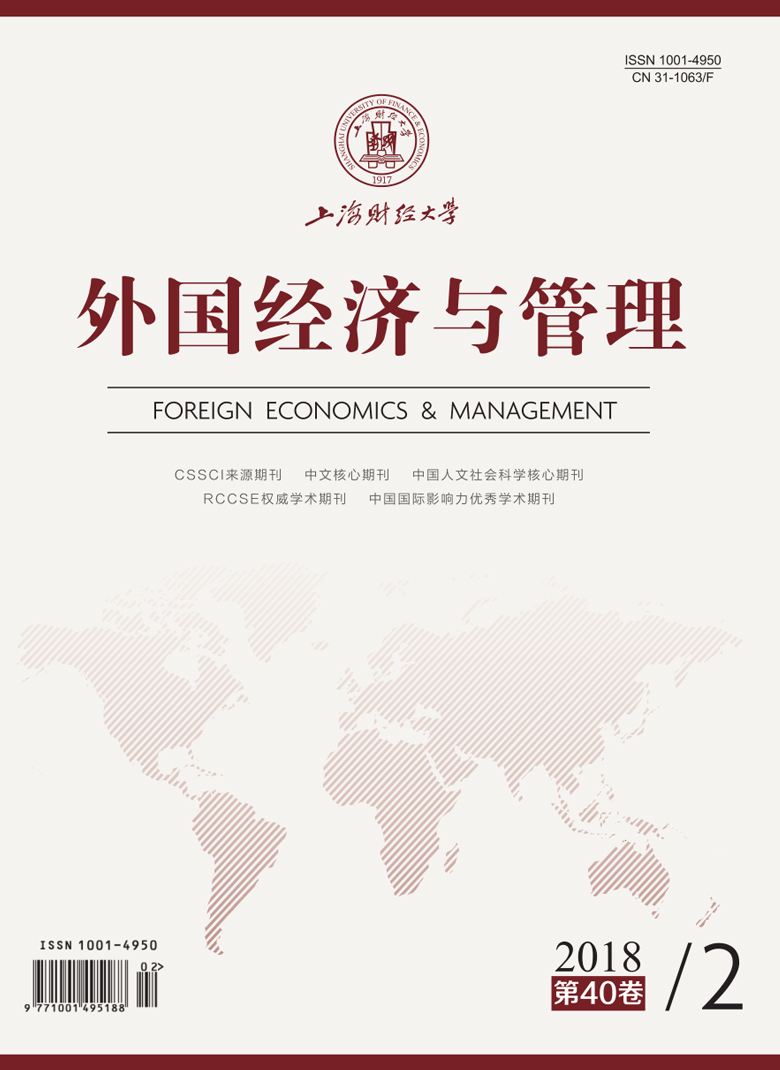在企业中,年功通常包含工龄(员工在组织中持续服务的时间长度)和年龄两个要素。强调年功的人力资源实践能否有效缓解员工的组织政治知觉,从而使员工安分守己,不会做出有损组织的行为,是一个值得探讨的问题。本文采用问卷调查法,以48家企业和918名员工的配对数据为样本,对这一问题展开了探讨。研究发现,年功导向人力资源实践能够有效降低员工组织越轨行为;同时,年功导向人力资源实践会促使员工形成较为保守和被动的策略倾向,产生保持沉默静待好处的组织政治知觉;并且,年功导向人力资源实践有助于缓解员工对其他个体自利行为的感知,以及在薪酬和晋升方面自己利益受到侵害的感知,从而降低一般政治行为的政治知觉以及薪酬和晋升政策的政治知觉;最后,年功导向人力资源实践能够通过使员工产生保持沉默静待好处的组织政治知觉,从而减少员工的组织越轨行为。研究结论为本土化人力资源实践的合理化解释提供了理论依据,扩展了对本土化人力资源实践影响效应的认识;同时也证明了组织政治知觉的跨文化差异性。
年功导向人力资源实践对组织越轨行为的影响:组织政治知觉的中介作用
摘要
参考文献
2 凌文辁. 和谐组织研究[M]. 北京: 科学出版社, 2011.
3 吴坤津, 刘善仕, 彭娟. 家长式人力资源管理研究述评[J]. 外国经济与管理, 2013,(3): 73–80.
5 吴坤津. 家长式人力资源管理的内容结构及其作用机制研究[D]. 广州: 华南理工大学, 2015.
6 翟学伟. 中国人的关系原理: 时空秩序、生活欲念及其流变[M]. 北京: 北京大学出版社, 2011.
7 Aoki M. Information, incentives, and bargaining in the Japanese economy[M]. Cambridge: Cambridge University Press, 1988.
9 Barnard M E, Rodgers R A. How are internally oriented HRM policies related to high-performance work practices? Evidence from Singapore[J]. The International Journal of Human Resource Management, 2000, 11(6): 1017–1046. DOI:10.1080/09585190050177148
10 Bennett R J, Robinson S L. Development of a measure of workplace deviance[J]. Journal of Applied Psychology, 2000, 85(3): 349–360. DOI:10.1037/0021-9010.85.3.349
11 Blau P M. Exchange and power in social life[M]. New York: Wiley, 1964
12 Chang C H, Rosen C C, Levy P E. The relationship between perceptions of organizational politics and employee attitudes, strain, and behavior: A meta-analytic examination[J]. Academy of Management Journal, 2009, 52(4): 779–801. DOI:10.5465/AMJ.2009.43670894
13 Child J, Markóczy L. Host-country managerial behaviour and learning in Chinese and Hungarian joint ventures[J]. Journal of Management Studies, 1993, 30(4): 611–631. DOI:10.1111/joms.1993.30.issue-4
14 Datta D K, Guthrie J P, Wright P M. Human resource management and labor productivity: Does industry matter?[J]. Academy of Management Journal, 2005, 48(1): 135–145. DOI:10.5465/AMJ.2005.15993158
15 Denison D R, Mishra A K. Toward a theory of organizational culture and effectiveness[J]. Organization Science, 1995, 6(2): 204–223. DOI:10.1287/orsc.6.2.204
16 Dobson J R. The origins, development and operation of the seniority promotion system for staff in the British tinplate industry[J]. Personnel Review, 1988, 17(6): 25–33. DOI:10.1108/eb055604
17 Dyer L, Kochan T A, Batt R. International human resource studies: A framework for future research[M]. Ithaca, NY: Cornell University, School of Industrial and Labor Relations, Center for Advanced Human Resource Studies, 1992.
18 Fischer R, Smith P B. Values and organizational justice: Performance-and seniority-based allocation criteria in the United Kingdom and Germany[J]. Journal of Cross-Cultural Psychology, 2004, 35(6): 669–688. DOI:10.1177/0022022104270110
19 Fischer R. Rewarding seniority: Exploring cultural and organizational predictors of seniority allocations[J]. The Journal of Social Psychology, 2008, 148(2): 167–186. DOI:10.3200/SOCP.148.2.167-186
20 George K D, Shorey J. Manual workers, good jobs and structured internal labour markets[J]. British Journal of Industrial Relations, 1985, 23(3): 425–447. DOI:10.1111/bjir.1985.23.issue-3
21 Guthrie J P. High-involvement work practices, turnover, and productivity: Evidence from New Zealand[J]. Academy of Management Journal, 2001, 44(1): 180–190. DOI:10.2307/3069345
22 Hedge J W, Borman W C, Lammlein S E. The aging workforce: Realities, myths, and implications for organizations[M]. Washington, DC: American Psychological Association, 2005.
24 Jackson S E, Schuler R S. Understanding human resource management in the context of organizations and their environments[J]. Annual Review of Psychology, 1995, 46(1): 237–264. DOI:10.1146/annurev.ps.46.020195.001321
25 Kacmar K M, Carlson D S. Further validation of the perceptions of politics scale(POPS): A multiple sample investigation[J]. Journal of Management, 1997, 23(5): 627–658. DOI:10.1177/014920639702300502
26 Kacmar K M, Ferris G R. Perceptions of organizational politics scale(POPS): Development and construct validation[J]. Educational and Psychological Measurement, 1991, 51(1): 193–205. DOI:10.1177/0013164491511019
27 Kaufman R S, Kaufman R T. Union effects on productivity, personnel practices, and survival in the automotive parts industry[J]. Journal of Labor Research, 1987, 8(4): 333–350. DOI:10.1007/BF02685218
29 Kwon S, Kim M S, Kang S C, et al. Employee reactions to gainsharing under seniority pay systems: The mediating effect of distributive, procedural, and interactional justice[J]. Human Resource Management, 2008, 47(4): 757–775. DOI:10.1002/hrm.v47:4
30 Lansberg I. Social categorization, entitlement, and justice in organizations: Contextual determinants and cognitive underpinnings[J]. Human Relations, 1988, 41(12): 871–899. DOI:10.1177/001872678804101201
31 Lincoln J R. Employee work attitudes and management practice in the U.S. and Japan: Evidence from a large comparative survey[J]. California Management Review, 1989, 32(1): 89–106. DOI:10.2307/41166736
32 Messersmith J G, Patel P C, Lepak D P, et al. Unlocking the black box: Exploring the link between high-performance work systems and performance[J]. Journal of Applied Psychology, 2011, 96(6): 1105–1118. DOI:10.1037/a0024710
34 O'Reilly C A, Chatman J, Caldwell D F. People and organizational culture: A profile comparison approach to assessing person-organization fit[J]. Academy of Management Journal, 1991, 34(3): 487–516. DOI:10.2307/256404
35 Osterman P. How common is workplace transformation and who adopts it?[J]. Industrial and Labor Relations Review, 1994, 47(2): 173–188. DOI:10.1177/001979399404700202
36 Pfeffer J, Cohen Y. Determinants of internal labor markets in organizations[J]. Administrative Science Quarterly, 1984, 29(4): 550–572. DOI:10.2307/2392939
37 Podsakoff P M, MacKenzie S B, Paine J B, et al. Organizational citizenship behaviors: A critical review of the theoretical and empirical literature and suggestions for future research[J]. Journal of Management, 2000, 26(3): 513–563. DOI:10.1177/014920630002600307
38 Preacher K J, Zyphur M J, Zhang Z. A general multilevel SEM framework for assessing multilevel mediation[J]. Psychological Methods, 2010, 15(3): 209–233. DOI:10.1037/a0020141
39 Rusbult C E, Insko C A, Lin Y W. Seniority-based reward allocation in the United States and Taiwan[J]. Social Psychology Quarterly, 1995, 58(1): 13–30. DOI:10.2307/2787140
40 Shen J, Benson J. When CSR is a social norm: How socially responsible human resource management affects employee work behavior[J]. Journal of Management, 2016, 42(6): 1723–1746. DOI:10.1177/0149206314522300
41 Van Den Noortgate W, Opdenakker M C, Onghena P. The effects of ignoring a level in multilevel analysis[J]. School Effectiveness and School Improvement, 2005, 16(3): 281–303. DOI:10.1080/09243450500114850
42 Zhu Y, Warner M, Rowley C. Human resource management with Asian characteristics: A hybrid people-management system in East Aisa[J]. The International Journal of Human Resource Management, 2007, 18(5): 745–768. DOI:10.1080/09585190701248133
引用本文
吴坤津, 刘善仕, 王红丽. 年功导向人力资源实践对组织越轨行为的影响:组织政治知觉的中介作用[J]. 外国经济与管理, 2018, 40(2): 68-81.
导出参考文献,格式为:
下一篇:创业机会共创研究探析





 11698
11698  11417
11417

